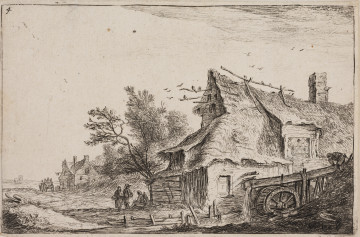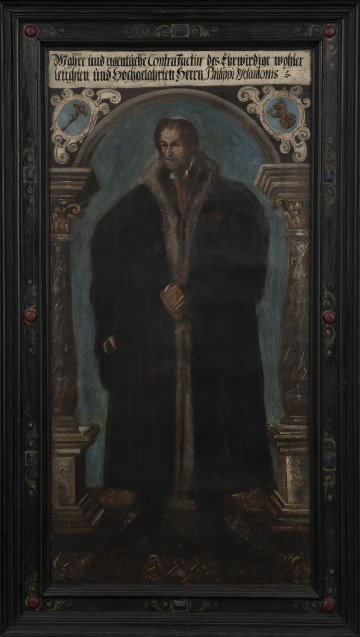
Le village au moulin a eau (Die Mühle rechts am Wasser) | Village with a mill by the water (The mill on the right by the water, Village by the water mill)
between 1626 — 1700
National Museum in Szczecin
Part of the collection: Graphics of German speaking countries
Max Liebermann's composition shows a group of women in a flat landscape, presumably on a vast sandy beach. He depicted most of them sitting over mended nets while one woman is standing. That way, he broke the monotony of the composition. The women are shown from a certain distance, and thereby they lose their individuality. The naturalist tried to show the hard work of simple people. By making the fishermen similar to each other, he gave the group a certain rhythm. Thanks to this, he achieved a new, unexpected effect - the anonymous figures are associated with signs on musical paper. In his work, Liebermann expressed the idea of the synaesthesia of arts: the conviction that arts interpenetrate one another. This thought was alive at the end of the 19th century and was developed by Art Nouveau representatives.Liebermann worked on the composition between 1894 and 1909. Thematically, he referred to genre scenes created by artists from the artist colony in the French town of Barbizon. He developed the graphic using the technique of etching, dry point and soft varnish, and it was printed on ribbed paper with the watermark of the VAN GELDER [ZONEN] paper mill. He signed it on the plate and in pencil. The graphic was commissioned by the Münchener Vereins für Originalradierung (Munich Association for the Art of Engraving), which issued it in a portfolio for 1894. The dry emboss marking the presented print indicates that it comes from the second edition - from the portfolio Max Liebermann. Sieben Radierungen published by the Berlin publishing house of Bruno Cassirer and Julius Bard in 1909.Max Liebermann was born in 1847 and died in 1935 in Berlin. He was a painter, graphic artist and draughtsman. He studied first in Berlin and then in the progressive academic environment in Weimar. He significantly influenced German art at the turn of the 20th century. He is considered the leading representative of German Impressionism.
Ewa Gwiazdowska
Author / creator
Dimensions
cały obiekt: height: 360 mm, width: 421 mm
Object type
graphic
Creation time / dating
Creation / finding place
Identification number
Location / status

between 1626 — 1700
National Museum in Szczecin

circa 1560 — 1580
National Museum in Szczecin
1911
National Museum in Lublin
DISCOVER this TOPIC
National Museum in Lublin
DISCOVER this PATH
Educational path